Doodle Weaving – ARTBAR
If I had to choose just one artwork medium for the rest of my daily life it would be fibers. I am constantly drawn to them, even from an early age when I only preferred to use corduroy trousers due to the fact I could run my fingers throughout the grooves and make a amazing audio. My target as an artwork major in faculty was textile style and design, and in my innovative job above the previous 30 years I have begun a children’t clothing enterprise, a quilting organization, and there is not a person wall in this household that doesn’t have one of my homemade cloth banners (hold out till you see my up coming post!). I am declaring all this to notify you that I eventually tried doodle weaving and I want to do almost nothing else all day every working day!!
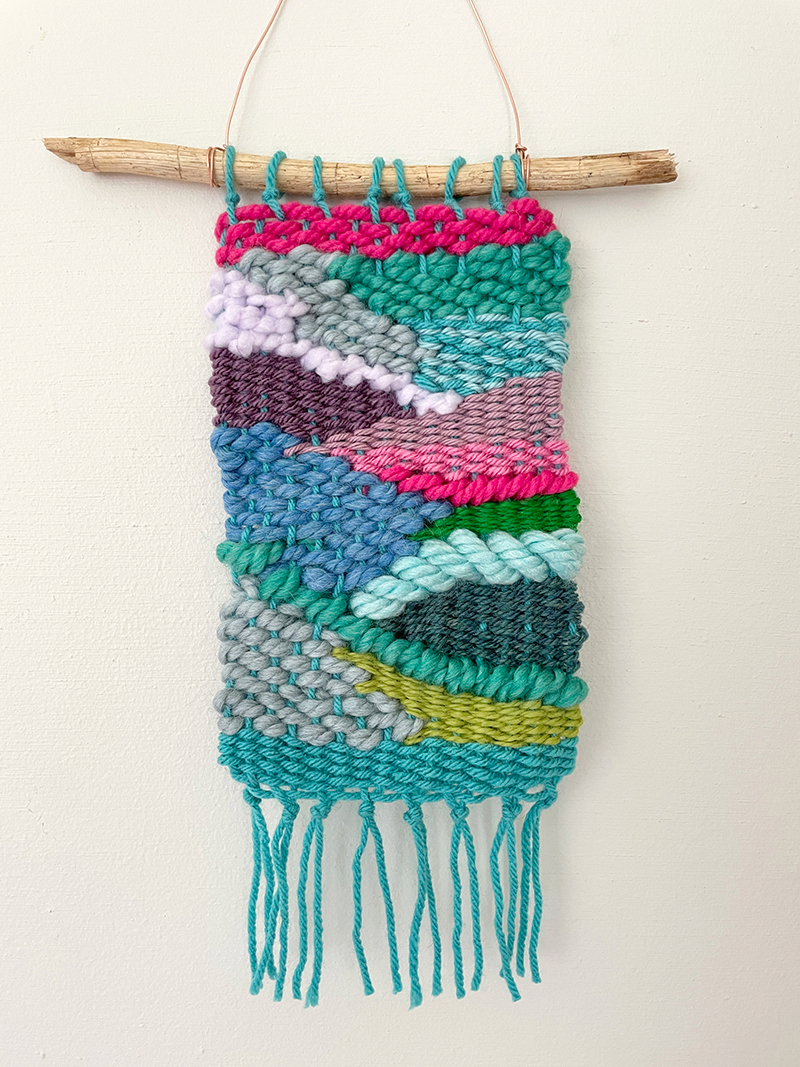
The ideal component is that there are really no problems to be made… just experimentation and color exploration. And you barely want any supplies, and there is no mess, and you can just take them on a vacation, and small children as young as 4 can make them much too. So quite a few factors to can make just one! Do you want to give it a try? Ok, great. Allow me clearly show you how it is accomplished.
Materials Necessary for Doodle Weavings:
~ Piece of cardboard for the loom (mine is 10.5″ X 6.5″)
~ Scissors
~ X-acto knife
~ Yarn in various weights and colors
~ Plastic lacing needle or masking tape
~ Stick
~ Fork (for pushing down the weft so it fits snuggly together with out gaps)
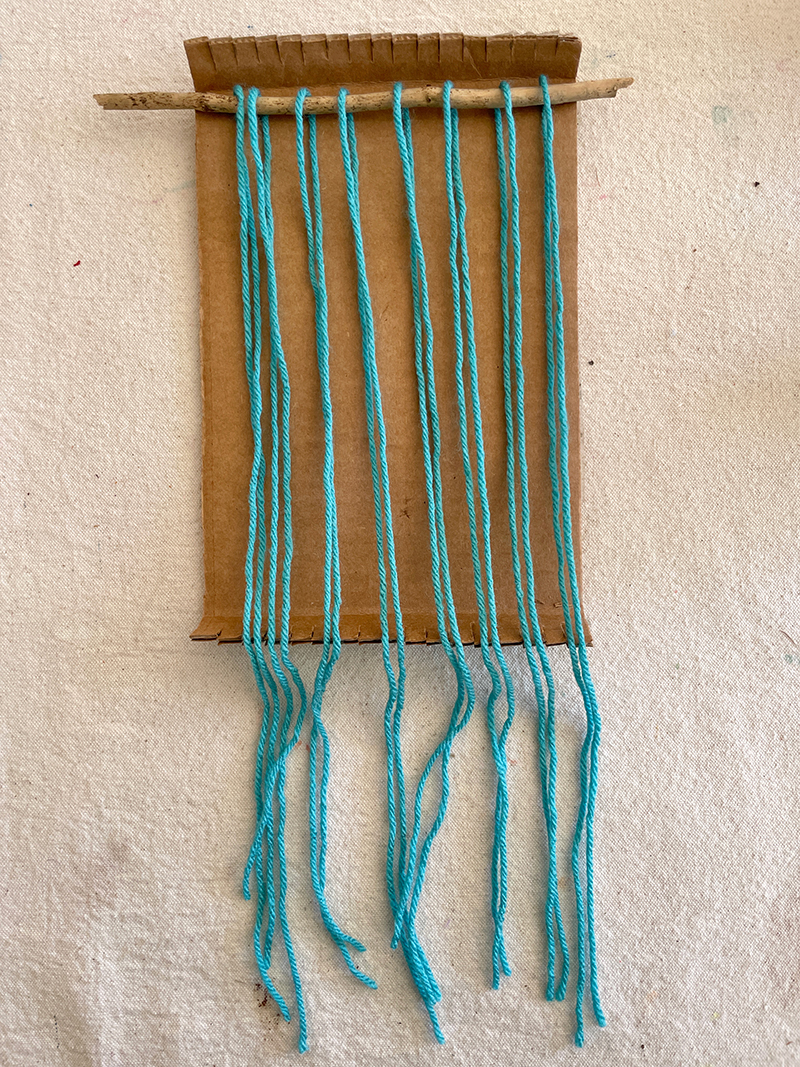
How to Make a Doodle Weaving:
1. Initial, make the cardboard loom.
Move 1: Cut a rectangular piece of cardboard, I occurred to previously have a piece that was 6.5 inches large and I lower the size to 10.5 inches.
Phase 2: Fold the ends up about 3/4 of an inch. You’ll need to have to “score” the again with an X-acto knife and then bend it up. This usually means you lower a shallow line at the point where by you want to bend it on the reverse aspect to help bend in a straight line.
Phase 3: Minimize an even total of slits with scissors on both finish for the warp (that is the stationery yarns that go up and down). I made 16 slits due to the fact I wanted my warp to be limited. But if you are making use of a large amount of major, thick yarn or doing this with smaller little ones then it’s possible you want to do 12 slits. You can see these rainbow weavings that we did in art camp for a loom with 12 warp threads.
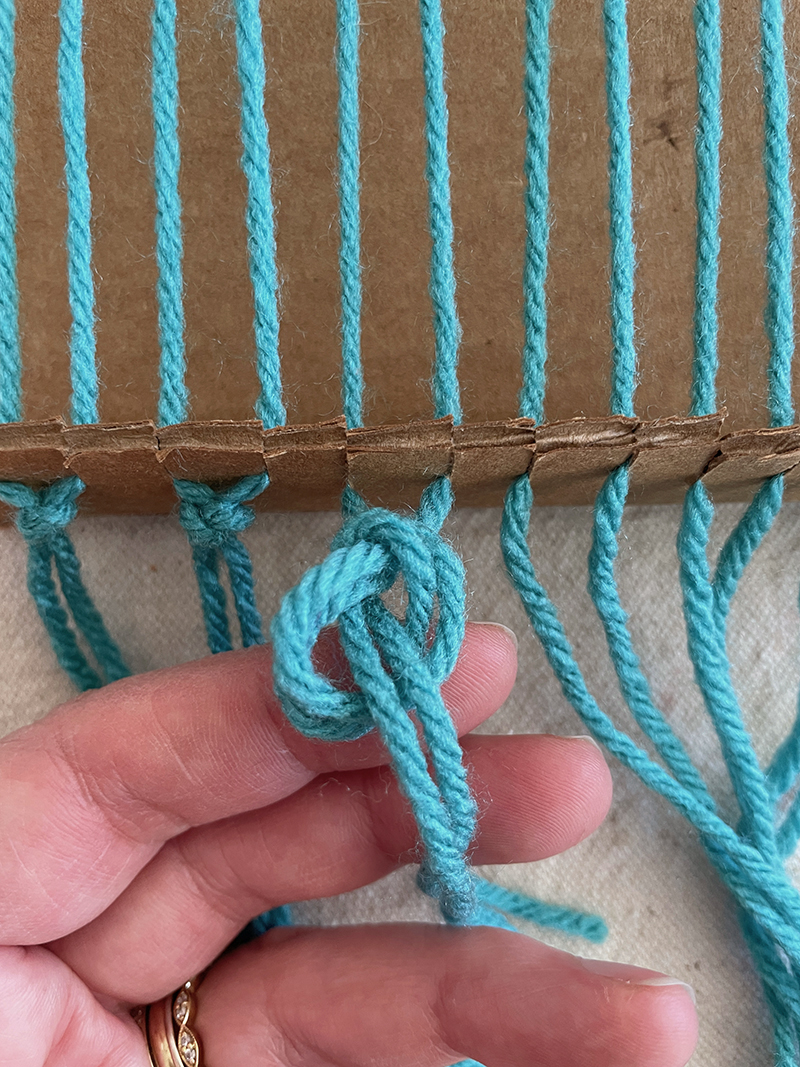
2. Attach the warp.
Action 1: Minimize a person warp yarn for every two slits. I lower 8 pretty extensive pieces. Each and every yarn should loop around the prime and dangle down at the bottom to build the fringe.
Step 2: Double-knot the top rated all-around the adhere, earlier mentioned the loom, then push the yarn into the slits.
Action 3: Push the other close of the yarn into the bottom slits and then pull so the rigidity is not as well unfastened and not to tight, but building guaranteed stress is equivalent with all warp threads.
Move 4: Tie knots at the bottom to produce the fringe. Really don’t trim the fringe but, wait around to do that at the conclude.
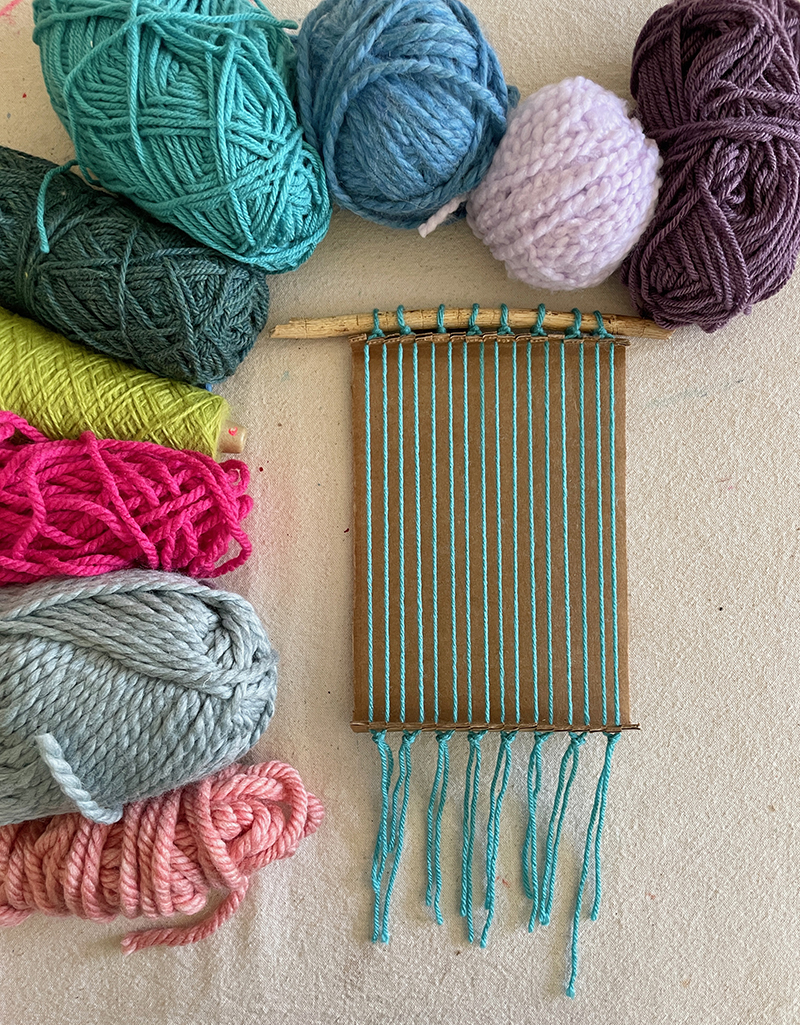
3. Start out your weaving.
Step 1: Select your weft shades (the yarns that go across) and decide on 1 coloration to start off. If you have a needle, terrific. If not (I could not come across mine) you can tape the conclude of the yarn like a shoelace which aids weave by way of the warp.
Action 2: Starting at the bottom, weave a number of rows just straight throughout. If you’ve in no way accomplished weaving prior to, consider a look my weaving with children article which describes in detail how to weave. It is in essence just more than and under, then back throughout in the opposite over-under pattern. It’s not challenging, but it can be easy to drop a warp thread or fail to remember to adjust pattern on the way again. So just after every operate by way of, use your fork to drive down the weft and eyeball that points glance superior. And don’t forget to be cautious not to pull the yarn far too tightly on either side. This will distort the weaving. Youthful young ones do this most of the time, but you can train them to view out for that.
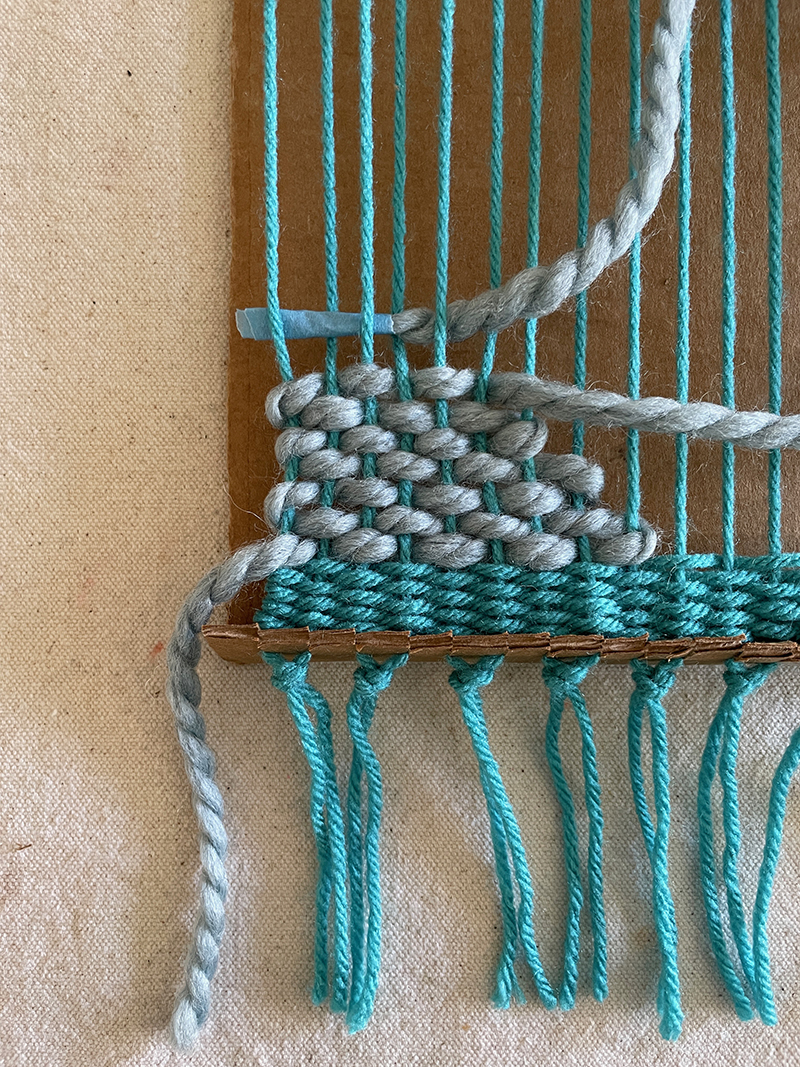
Action 3: After you have a several rows on the bottom, you can start off “doodling” with unique yarns. Commence any where and just create a shape. I was loosely imagining of mountains when I manufactured this which assisted in my doodling.
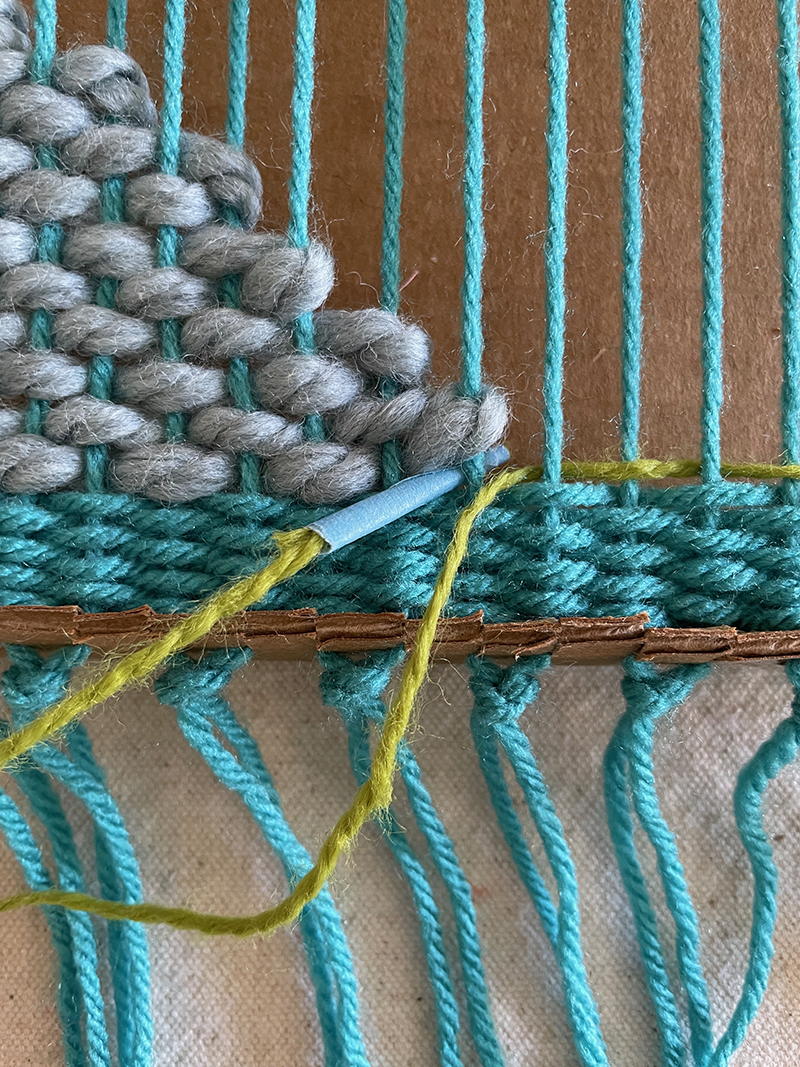
Move 4: When you are all set for the upcoming shade, just begin following to the final coloration, even if you’re setting up in the center. To prevent gaps in the weaving, make positive that the upcoming shade is woven above some of the identical warp yarns that the previous colour utilized. But if you do discover that there are gaps at the conclusion, you can also just go back again and fill them. This is doodling, so something goes!
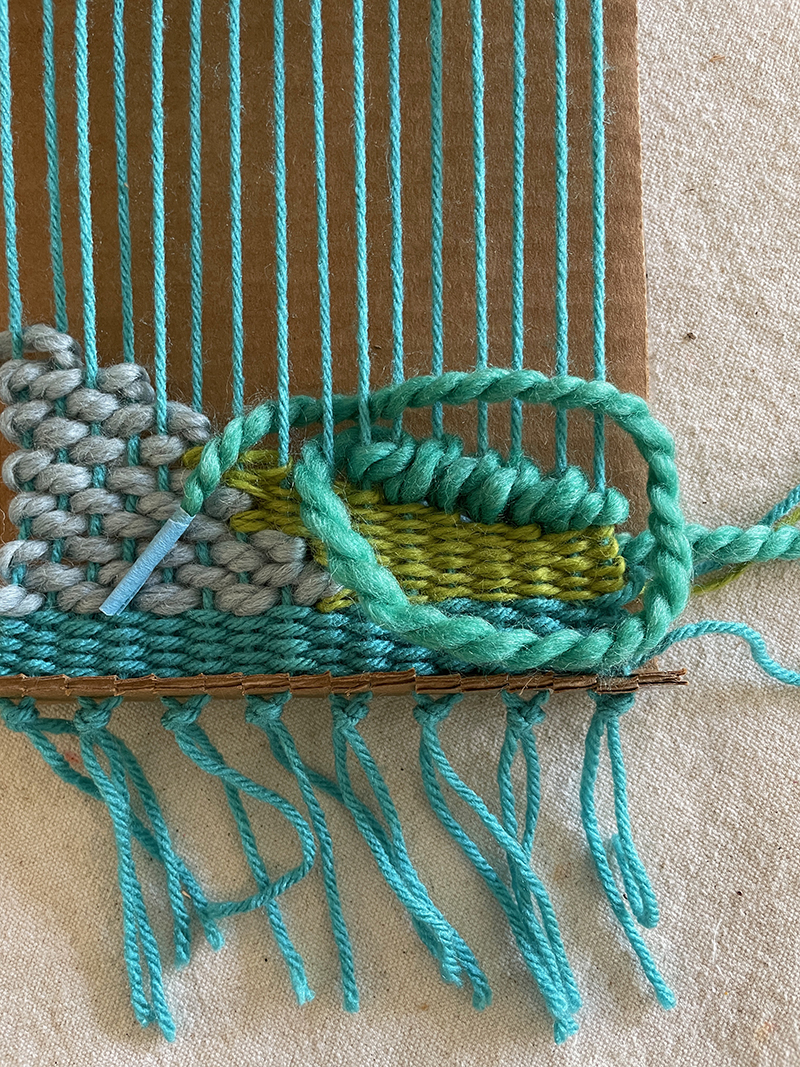
Step 5: Try out some other sorts of weaves. I really don’t know what this is identified as (below is a glossary of diverse weaves if you are intrigued) but I just made it up and it appeared neat and exciting. I like mixing puffy, thick yarn with thinner yarns. For me, the color is as significant as the texture.
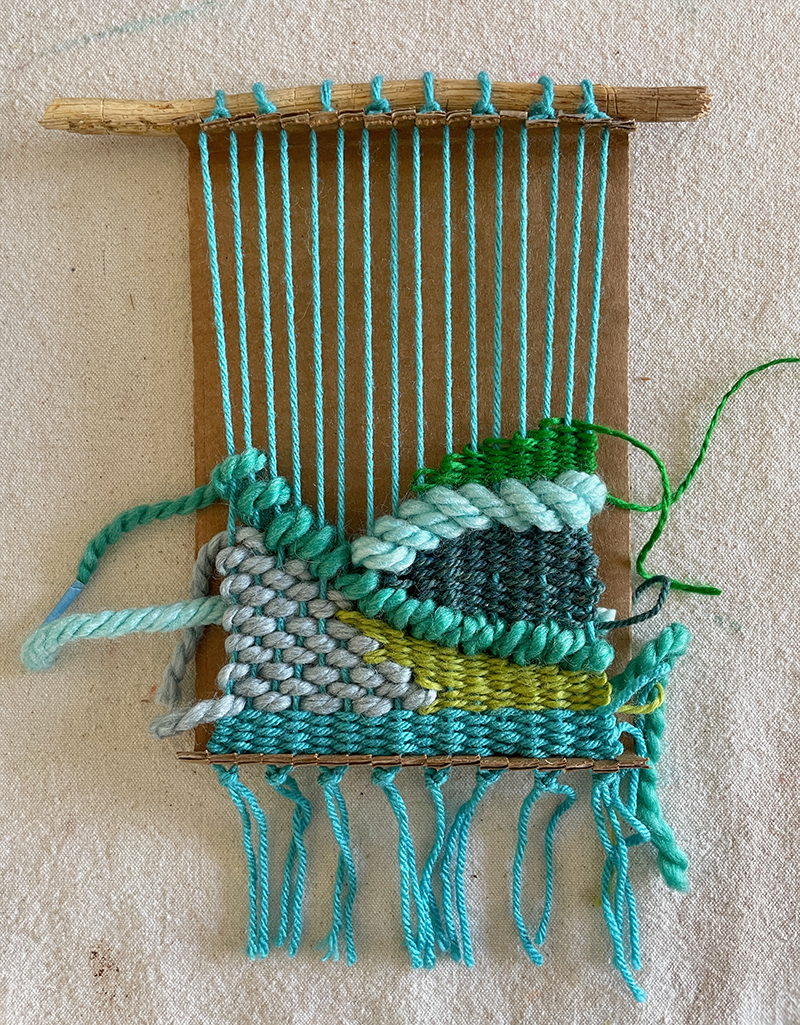
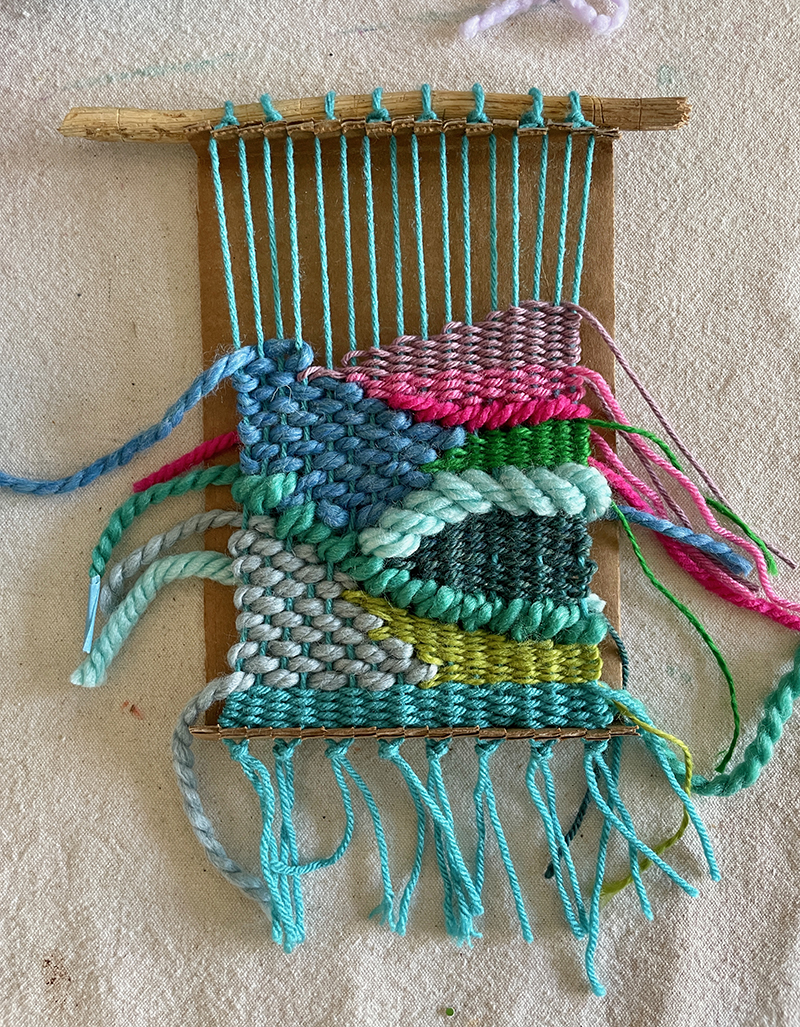
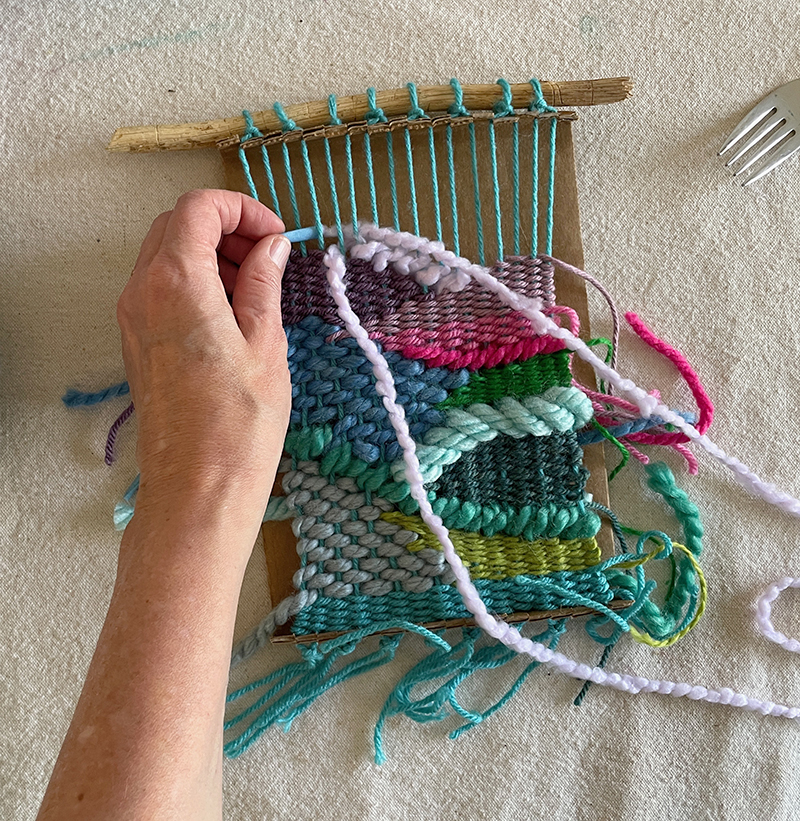
Bear in mind, every single time you begin or finish a new coloration, depart a tail. You can even go away the tape on the conclusion for the reason that you can use it afterwards to finish the again.
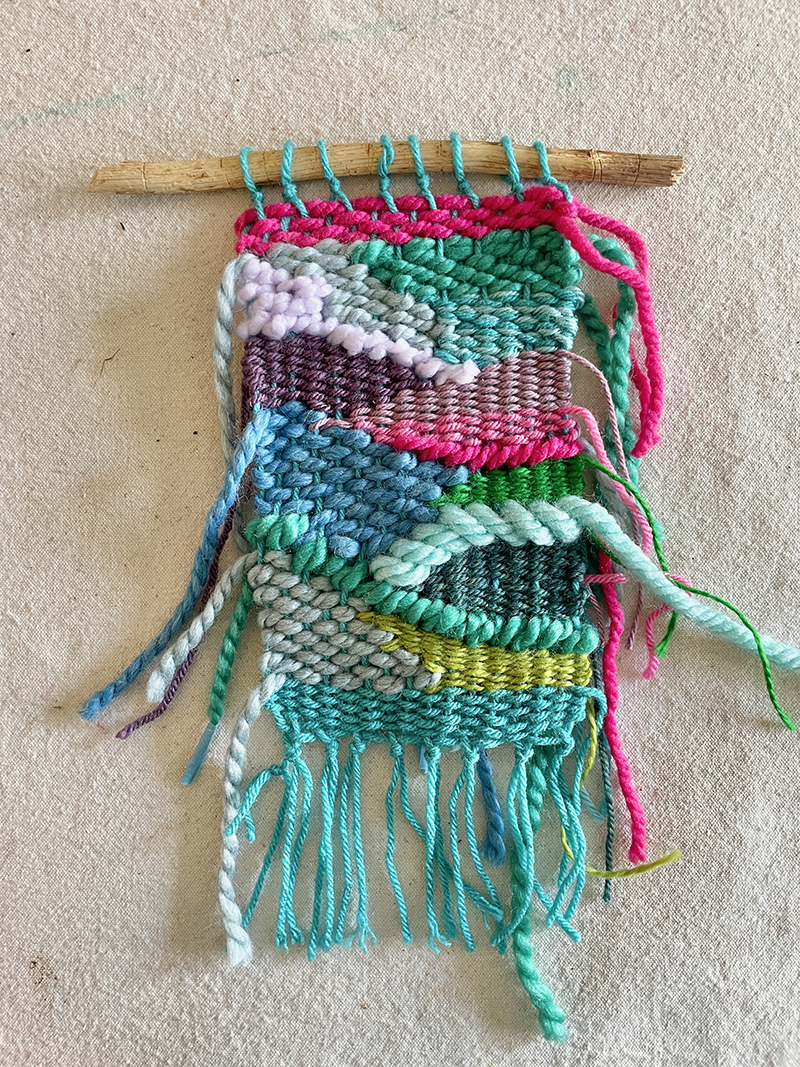
Action 6. When you get to the major, weave a couple of straight rows to finish. Meticulously pop the warp yarns off of the loom. You will come across that there is a minimal additional house at the prime and base. You can either thrust the weft yarns around a bit to fill the space, or weave a few a lot more rows to fill the house.
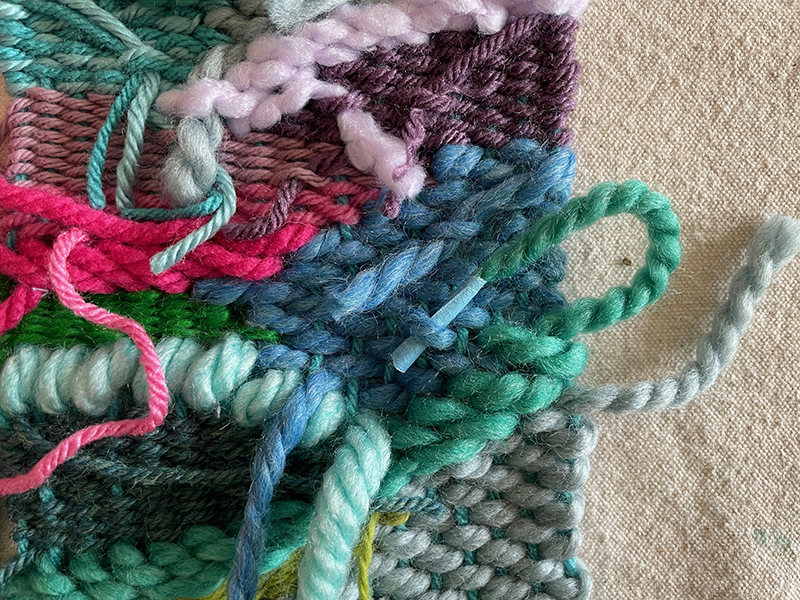
Move 7: Now it is time to complete the back again. Initially, make absolutely sure all the tails are looped by the final warp yarns at the finishes. Then, flip your weaving around and just get started weaving the tails back through some of the warp or weft threads. You can possibly use the taped end, or use a boring pencil to pull up a loop a little, then tuck the tail beneath.
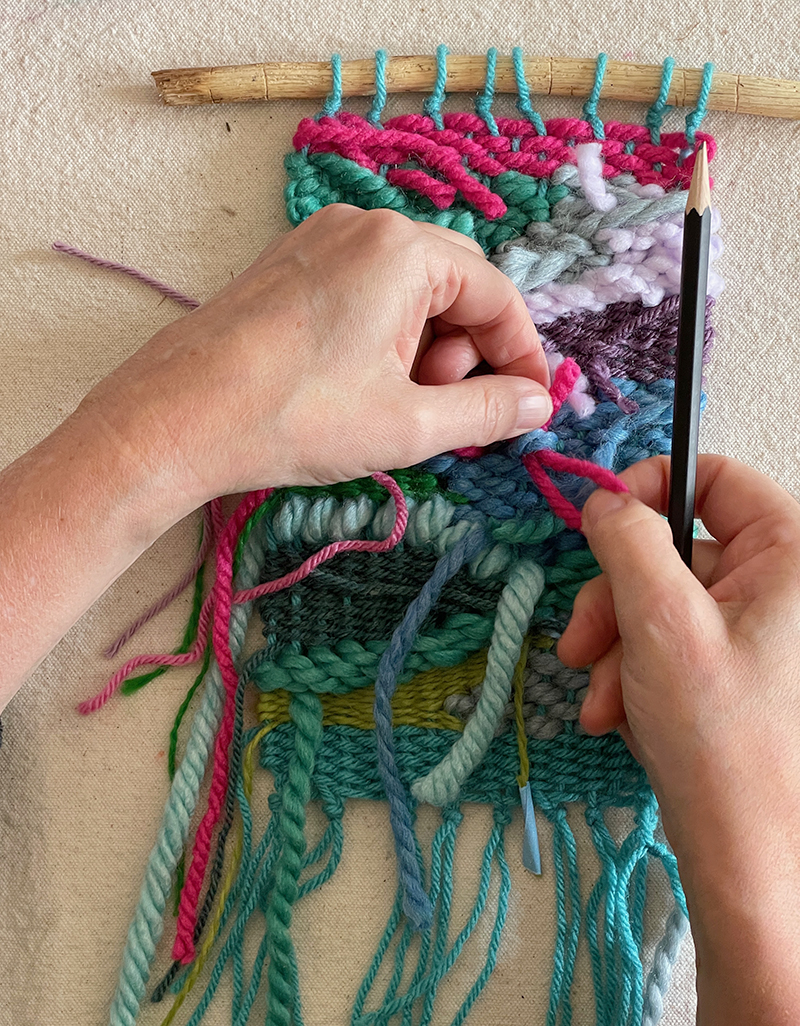
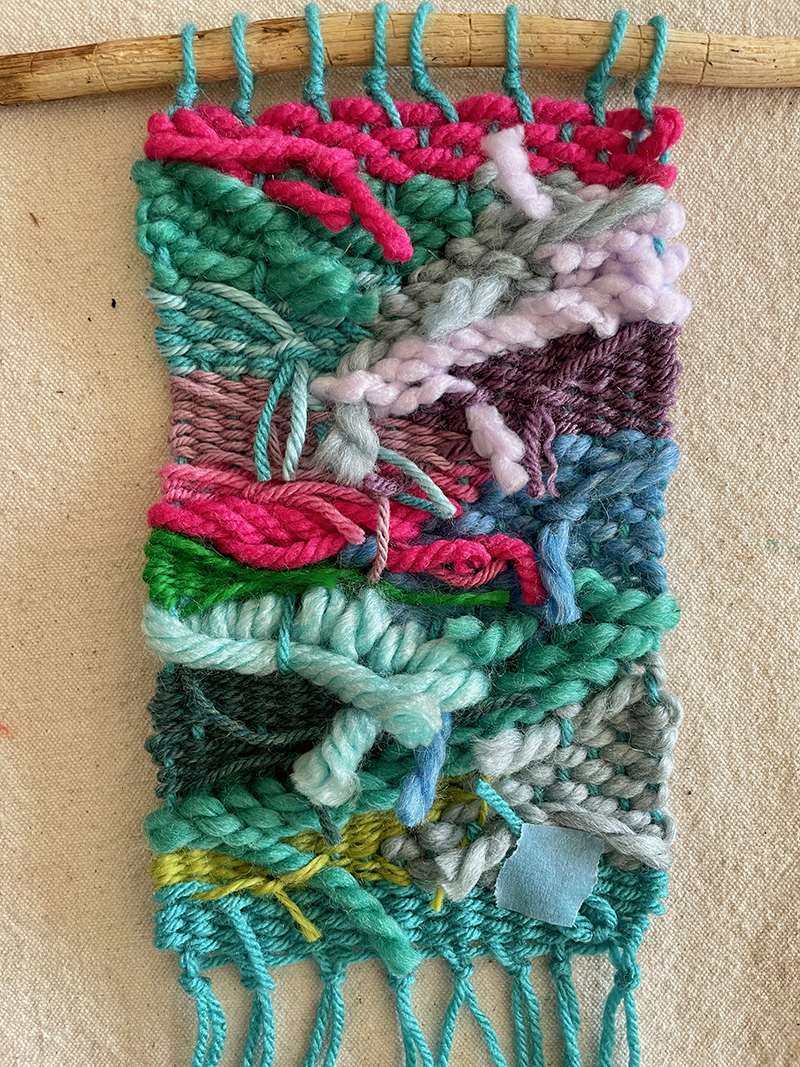
When all the tails are tucked in (you may possibly have to use masking tape often if there is nowhere to tuck something), snip them to about an inch or so.
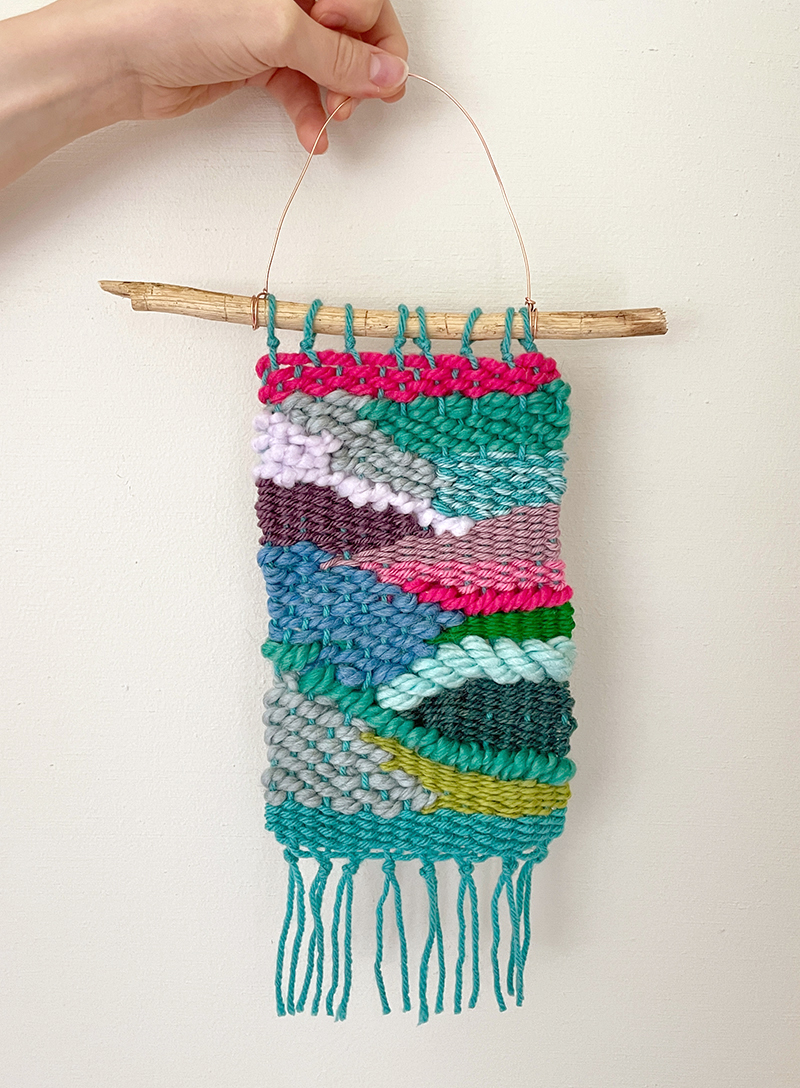
Step 8: Trim the bottom, insert a wire hanger, and you are carried out! I hope you really like your weaving and are pretty proud of it. I adore mine so considerably and simply cannot wait to make more!
xo, Bar
– – – – – – – – – – – – – – – – – – – –
Did you like this put up? Right here are some much more imaginative concepts working with fibers!
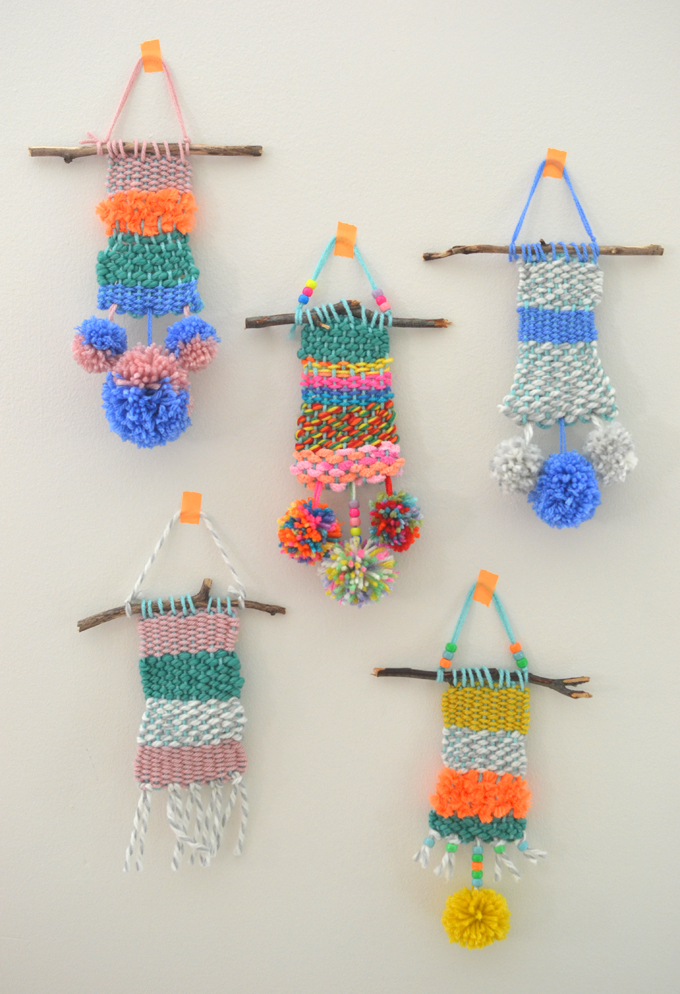
Weaving with Youngsters
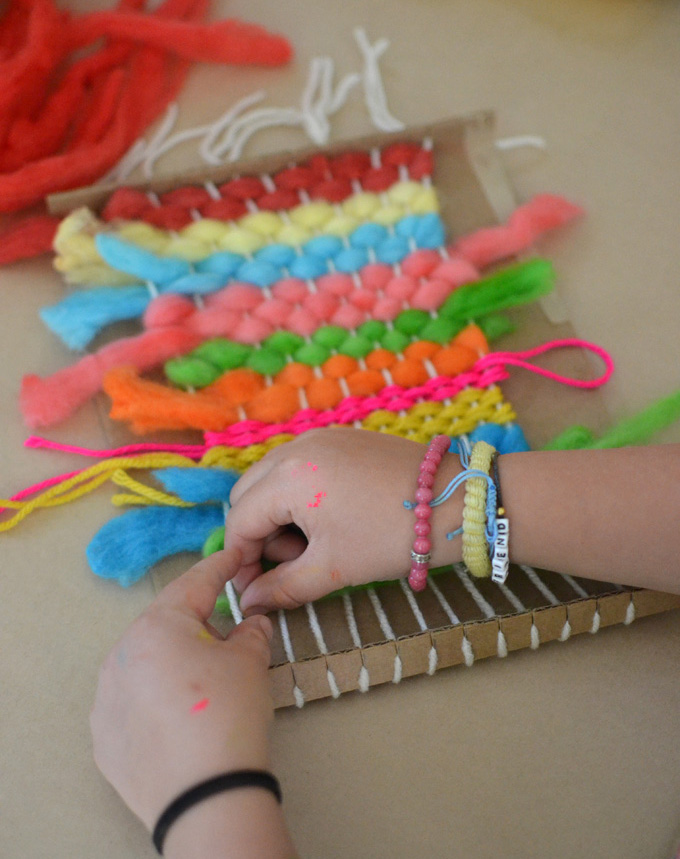
Rainbow Weaving with Koolaid Dyed Yarn
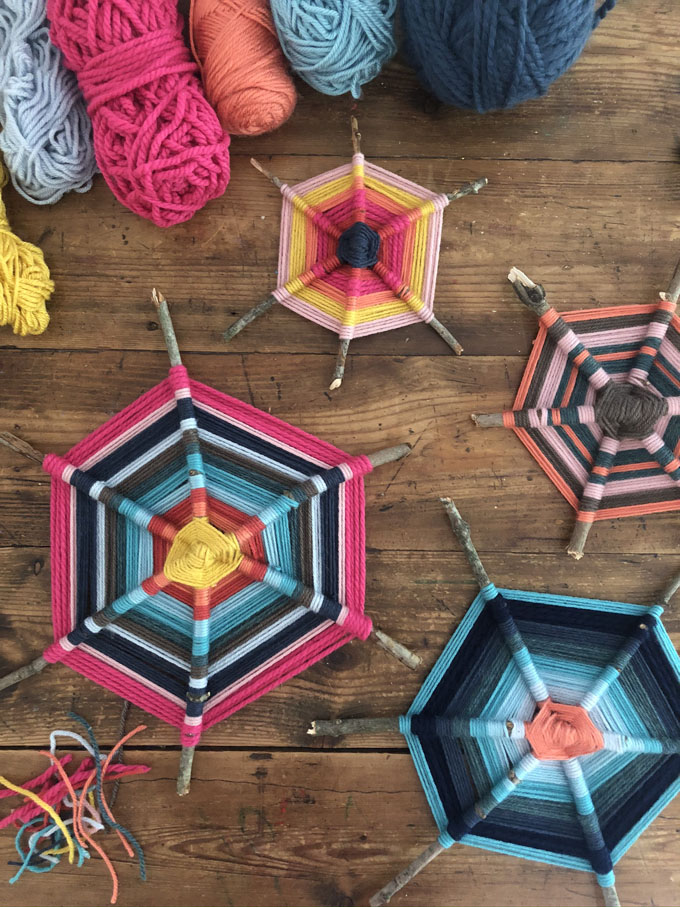
Creating God’s Eyes with Sticks
